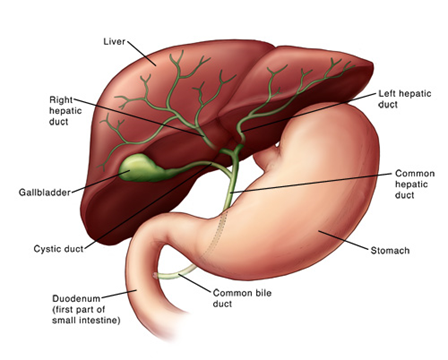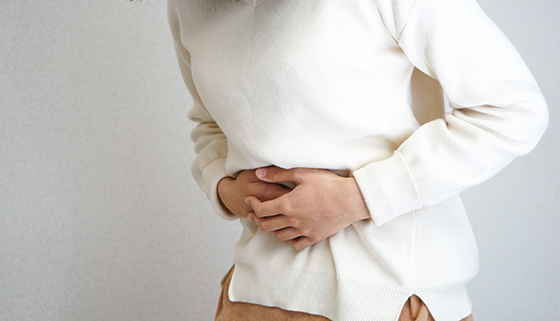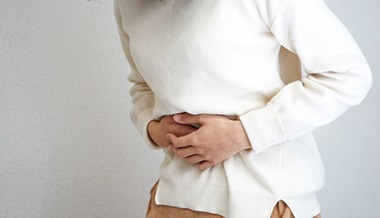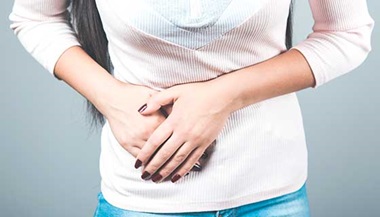Gallbladder Scan
What is a gallbladder scan?
A gallbladder scan is a specialized radiology procedure used to assess the function and structure of the gallbladder. This procedure may also be referred to as a liver-biliary scan because the liver often is examined as well due to its proximity and close functional relationship to the gallbladder.
A gallbladder scan is a type of nuclear medicine procedure. This means that a tiny amount of a radioactive substance is used during the procedure to assist in the examination of the gallbladder. The radioactive substance, called a radionuclide (radiopharmaceutical or radioactive tracer), is absorbed by normal gallbladder tissue.
The radionuclide used in gallbladder scans is usually a form of technetium. Once absorbed into the gallbladder tissue, the radionuclide emits a type of radiation, called gamma radiation. The gamma radiation is detected by a scanner, which processes the information into a picture of the gallbladder.
By measuring the behavior of the radionuclide in the body during a nuclear scan, the doctor can assess and diagnose various conditions, such as obstruction of bile ducts from gallstones, tumors, abscesses, hematomas, organ enlargement, or cysts. A nuclear scan may also be used to assess organ function.
The areas where the radionuclide collects in greater amounts are called "hot spots." The areas that do not absorb the radionuclide and appear less bright on the scan image are referred to as "cold spots."
Gallbladder disease may be caused by infection or by a blockage within the gallbladder or the ducts of the liver/gallbladder system (the biliary tree). If the gallbladder is infected or obstructed, the radionuclide cannot pass into the gallbladder. If there is a blockage within the biliary tree, passage of the radionuclide will stop at the point of the obstruction.
Other related procedures that may be used to diagnose problems of the gallbladder include abdominal X-rays, computed tomography (CT scan) of the liver and biliary tract, abdominal ultrasound, cholecystography, or endoscopic retrograde cholangiopancreatography (ERCP).
About the gallbladder

The gallbladder is a pear-shaped organ located in the fissure between the right and left lobes of the liver. The gallbladder stores and concentrates bile, a substance produced by the liver and used to break down fat for digestion.
What are the reasons for a gallbladder scan?
A gallbladder scan may be performed in situations where gallbladder disease (cholecystitis) is suspected, such as with severe acute right upper abdominal quadrant pain or when jaundice (yellowed skin and/or eyes) is present. Elevated liver enzymes in a specific blood test may also indicate some type of gallbladder disease.
A gallbladder scan may also be helpful in diagnosing biliary duct obstructions and determining gallbladder function.
There may be other reasons for your doctor to recommend a gallbladder scan.
What are the risks of a gallbladder scan?
The amount of the radionuclide injected into your vein for the procedure is small enough that there is no need for precautions against radioactive exposure. The injection of the radionuclide may cause some slight discomfort. Allergic reactions to the radionuclide are rare, but may occur.
For some patients, having to lie still on the scanning table for the length of the procedure may cause some discomfort or pain.
Patients who are allergic to or sensitive to medications, contrast dyes, or latex should notify their doctor.
If you are pregnant or suspect that you may be pregnant, you should notify your health care provider due to the risk of injury to the fetus from a gallbladder scan. If you are lactating, or breastfeeding, you should notify your health care provider due to the risk of contaminating breast milk with the radionuclide.
There may be other risks depending on your specific medical condition. Be sure to discuss any concerns with your doctor prior to the procedure.
Certain factors or conditions may interfere with the accuracy of a gallbladder scan. These factors may include, but are not limited to, the following:
-
Presence of a radionuclide in the body from a previous nuclear medicine procedure within a certain period of time
-
Eating and/or drinking within two to eight hours of the procedure
-
Prolonged period of fasting (usually greater than 24 hours)
-
Administration of hyperalimentation (a form of IV nutrition)
-
Liver disease
How do I prepare for a gallbaldder scan?
PRECAUTIONS: If you are pregnant or think you might be pregnant, please check with your doctor before scheduling the exam. Other options will be discussed with you and your doctor.
BREASTFEEDING: If you are breastfeeding, you should notify your health care provider due to the risk of contaminating breast milk with the tracer.
CLOTHING: You may be asked to change into a patient gown. A gown will be provided for you. Lockers are provided to secure your personal belongings. Please remove all piercings and leave all jewelry and valuables at home.
EAT/DRINK: You will be asked to not eat or drink anything for up to eight hours. You should not fast any longer than the period specified by your doctor, as fasting for too long of time may affect the accuracy of the test as much as not fasting long enough.
ALLERGIES: Notify the radiologist or technologist if you are allergic to or sensitive to medications, contrast dyes or iodine. The injection of the radiotracer may cause some slight discomfort. Allergic reactions to the radiotracer are rare, but may occur.
What happens during a gallbladder scan?
A gallbladder scan may be performed on an outpatient basis or as part of your stay in a hospital. Procedures may vary depending on your condition and your doctor's practices.
Generally, a gallbladder scan follows this process:
-
You will be asked to remove any jewelry, or other objects that may interfere with the procedure.
-
You will be asked to remove clothing and will be given a gown to wear.
-
An intravenous (IV) line will be started in the hand or arm for injection of the radionuclide.
-
The radionuclide will be injected into your vein.
-
You will be asked to lie still on a scanning table. You will need to remain still during the procedure, as any movement may affect the quality of the scan.
-
The scanner will be placed over the abdominal area in order to detect the gamma rays emitted by the radionuclide in the gallbladder tissue. A series of images will be taken at intervals until the gallbladder is visualized.
-
In some cases, you may receive an IV injection of morphine during the procedure to allow better visualization of the gallbladder during an indeterminate test.
-
If the radionuclide does not enter the gallbladder within a certain period of time, the scan may be repeated within a few hours to determine if there is a complete or partial obstruction in the biliary tree.
-
When the scan has been completed, the IV line will be removed.
While the gallbladder scan itself causes no pain, having to remain still for the length of the procedure might cause some discomfort or pain, particularly in the case of a recent injury or invasive procedure such as surgery. The technologist will use all possible comfort measures and complete the procedure as quickly as possible to minimize any discomfort or pain.
What happens after a gallbladder scan?
You should move slowly when getting up from the scanner table to avoid any dizziness or lightheadedness from lying flat for the length of the procedure.
You may be instructed to drink plenty of fluids and empty your bladder frequently for about 24 hours after the procedure to help flush the remaining radionuclide from your body.
The IV site will be checked for any signs of redness or swelling. If you notice any pain, redness, and/or swelling at the IV site after you return home following your procedure, you should notify your doctor as this may indicate an infection or other type of reaction.
If you were asked to fast prior to the procedure, you may either be offered food and drink after the procedure or encouraged to have a meal, unless your doctor tells you differently.
You may resume your usual diet and activities, unless your doctor advises you differently. Your doctor may give you additional or alternate instructions after the procedure, depending on your particular situation.





